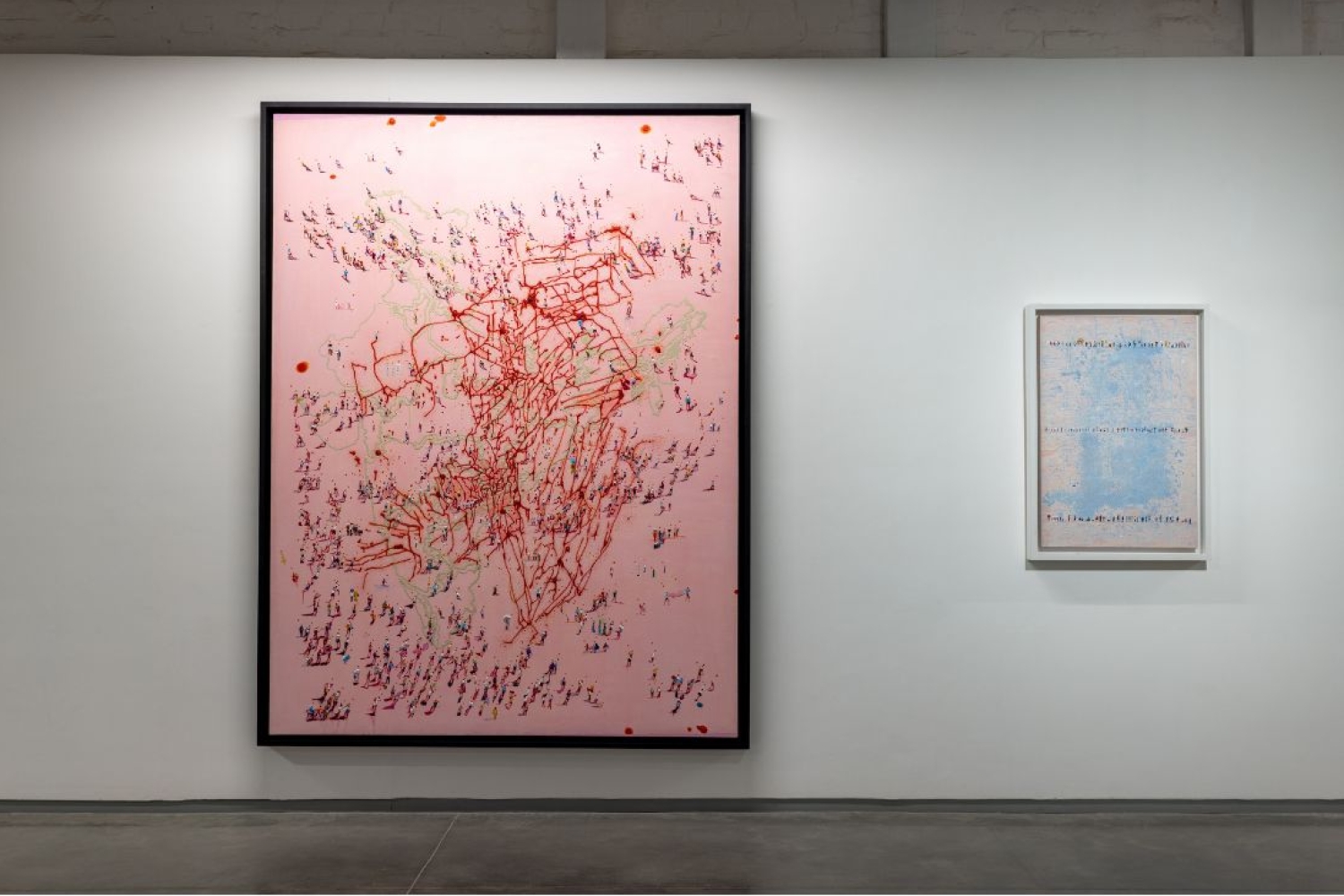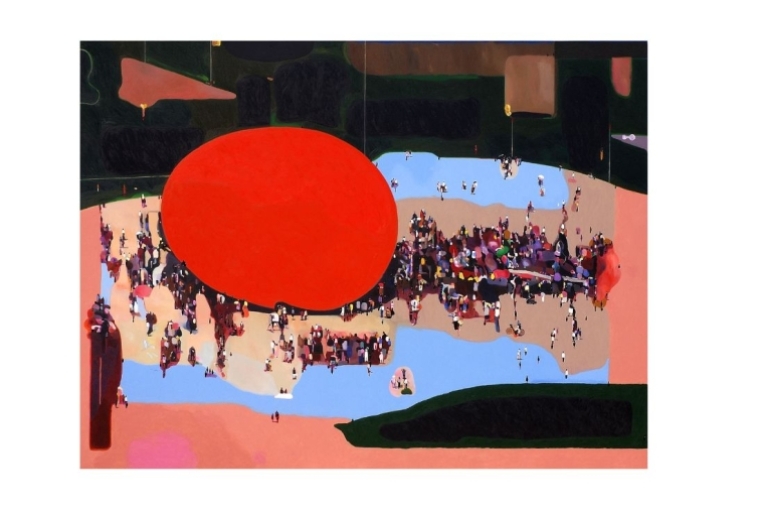

Kodanda Rao's artworks teem with human presence, focusing on societal aspects rather than portraying unspoiled natural landscapes. His compositions frequently offer expansive aerial perspectives, portraying bustling scenes and human interactions, sometimes showcasing sizable gatherings organized into intricate formations, and at other times revealing more scattered participants. The artist's choice of colors is deliberately unconventional, juxtaposing vivid, almost neon hues with synthetic shades. This artistic choice may serve as a poignant reminder of our rapidly transforming planet, drawing attention to the dramatic changes occurring before our very eyes. We are in conversation with the artist.
How did you come up with the idea of painting landscapes from a bird's-eye view?
I am interested in the bird's-eye view because I consider myself a silent observer with the ability to perceive. In life, one should aspire to be like an eagle, soaring high and touching the sky. Observation, in itself, is a complete act, and the very act of observing brings its own sense of freedom along with the beauty of profound stillness. I paint landscapes that depict the realities of life.

Tell us about your journey of becoming an artist?
I'm not exactly sure when my journey began, but I unconsciously started exploring art during my high school days. I actively participated in decorating classrooms for events like the 15th of August and Republic Day. I would draw on walls in my village, paint and write for weddings, and even create clay sculptures for cultural festivals like Gairamm and Ganesh Pooja.
During my junior college, I chose the science stream with a focus on Biology, where I was required to create diagrams. This further piqued my interest in art. It was my neighbors from the village who suggested that I pursue a Fine Arts course at Andhra University in Vizag. I applied, was accepted, and acquired some valuable academic skills there. As I progressed in my education, I decided to pursue further studies and came to Baroda to complete my master's degree. My primary area of focus was printmaking. However, after completing my master's, I transitioned into painting.
After facing some initial challenges and struggles, I began my artistic journey consciously and with a serious commitment. Now, I am fully aware and dedicated to my artistic path. To be frank, I initially knew very little about art, but I am constantly learning and gaining a deeper understanding. Creating art brings me immense joy, and I am truly enjoying this journey.
Can you tell us about the contrasting and stark set of colors you use in your art, which are often rare to see in landscape art?
Yes, my use of colors is unusual. I work with emotionally charged colors because, for me, color represents more than just its visual aspect; it carries emotions, thoughts, and feelings. Primarily, I utilize fleshy tones, acid tones, and earthy colors. These hues resonate with me on a profound level, deep within my skin. Pink, for instance, symbolizes the color of flesh, and I experience emotions and events at a profound, visceral level, ingrained in my very skin, blood, and bones.
Do you aim to depict a specific kind of relationship between the land and people, with reference to geopolitics?
Yes, I depict many aspects of life. I'm not judgmental, but I do question various psychological conditions, conflicts, contemporary issues, histories, beliefs, faiths, dogmas, and human races with a reference to socio-geopolitics.
My landscape paintings portray the realities of life filled with people and are more about society than pristine nature. Often, you'll find vast territories captured from a bird's eye view, with a great deal of activity below. Sometimes, large crowds converge into formations, while at other times, you'll see only a sprinkling of participants. Through my art, I aim to draw attention to a planet that is undergoing drastic changes right before our eyes.
Why did you choose the title In Present Tense for your exhibition?
As an artist, I aim to address the immediate present, the current moment, the contemporary realities of life as a witness. Recently, during the pandemic, we all bore witness to the immense suffering of the working class. "Desi Lives (One Nation, many Boundaries)," a large pink artwork, portrays migrants and people in transit along different routes. I had never witnessed such heart-wrenching scenes before, and it deeply disturbed me.
Another large oil on canvas piece titled "Imaginations" serves as a dialogue about our own imaginations and the limitations of our minds. The circular form within the artwork is a creative object, observed and interpreted by people according to their own imaginations. It's not a depiction of reality but rather a scene unfolding in a dreamlike state. All of my works depict crowds, masses of faceless individuals, groups, and sects.
Words Paridhi Badgotri
Date 24.10.2023